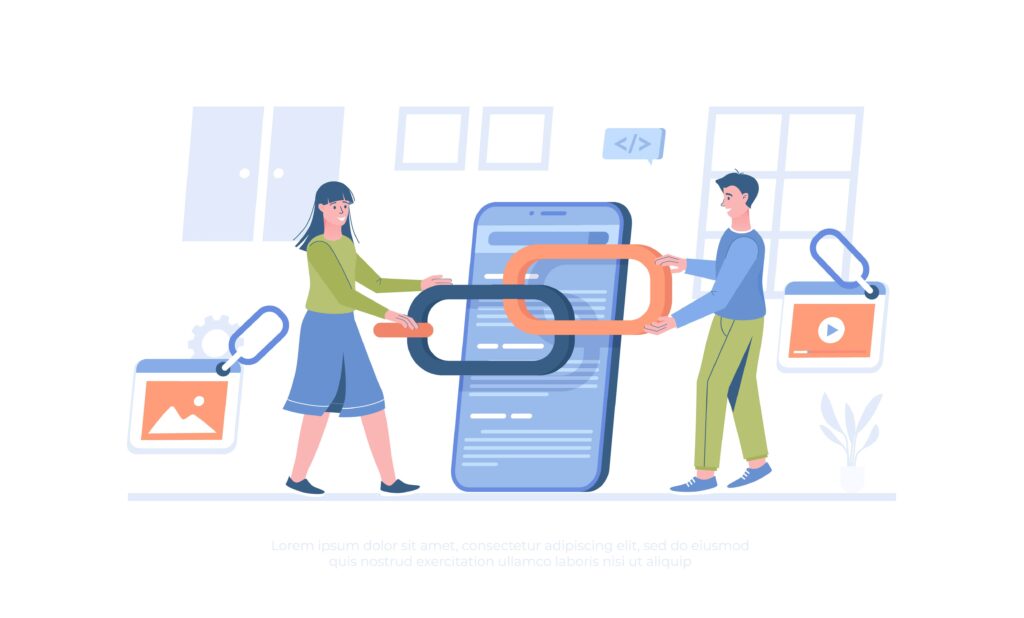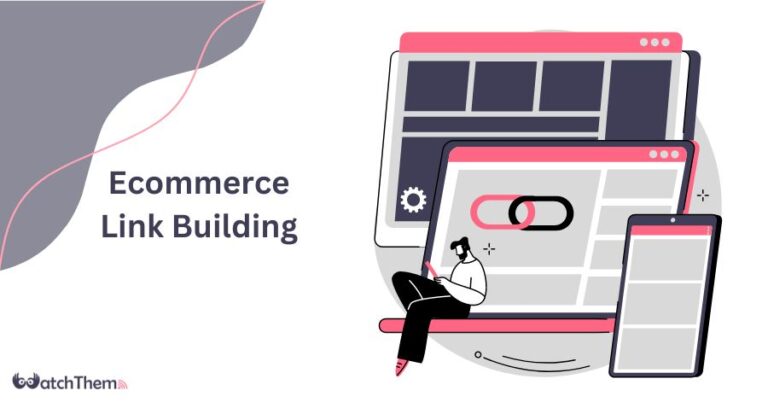Page Contents
Today’s e-commerce space is such a crowded arena, so standing out is no easy feat at all. There are over 24 million online stores vying for attention out there, so brands must work their hardest to connect with target customers. The use of quality link building strategies remains a tried and true way to rise above the noise. Serving as proof of third-party trust and credibility, they can capture audience attention and drive critical organic traffic to your site.
So, how does a brand make sure its voice gets heard? By strategically incorporating website strategy into its link building efforts. Instead of cold contacts, view influencers as your potential partners. Seek out websites that fit your brand’s mission in an organic, authentic fashion. Engage audiences by making them feel you truly understand their needs right before pitching your products.
With some tactical relationship-building, your shop can thrive amid fierce competition. How to go about it? Read on.
The Primacy of Quality Over Quantity in Link Building
As conversations grow around AI and machine learning’s impact, Google and other search engines are carefully weighing signals that speak to the quality, suitability, and relevance of backlinks to a site. Yes, link volume still matters, but the focus lies more on where those links come from and in what context.


So, the key question becomes less, ‘How many links can I get?’ and more, ‘What kinds of reputable sites can I earn links from?’ The sites, pages, and domains that link back pass on their credibility and trust to your brand through their recommendation.
How to Get Quality Backlinks
How, then, do you secure endorsements from respected online authorities and convince search engines your brand has merit? Here are some proven link building strategies:
1. Establish yourself as a subject matter expert
Competition stems from players talking about the same topic targeting the same audience base. Come out a victor by cementing your status as a bonafide expert that sites want to quote and customers want to hear from.
But note that simply making claims about your proficiency isn’t enough. It doesn’t work that way. Demonstrate it by creating premium online resources packed full of insights and information searchers find useful.
Some formats that attract attention include:
- Guides exploring specific issues in detail,
- Case studies uncovering new findings,
- High-value data assets that include industry reports and surveys,
- Thought-leadership-focused blogs, think-pieces, and op-eds.
Customers who perceive value alignment with a brand demonstrate over twice the level of trust compared to those lacking shared values. So, the best you can do is ensure your content provides genuine utility to site visitors beyond the intent of promoting your brand.
Now, how do you channel these link building efforts into securing coveted editorial links?
2. Guest Post on Industry-Specific Blogs
How in the world do you get influential links? Guest posting on popular sites it is! More importantly, do your homework and find sites that really get your audience. Take stock of their contributor tips and past guest writers before setting your sights on what and who to pitch.
When pitching ideas, focus on timely news hooks and topics their niche audience cares about, demonstrating knowledge of what performs well.
Here are some framing hints:
- Offer additional research or stats to strengthen the author’s point,
- Share anecdotes and learnings from your own experience,
- Provide a nuanced perspective to align with their view.
Furthermore, always tie your pitch clearly to current e-commerce trends and SEO-friendly keywords in your industry. Getting your guest posts optimized for search engines can boost your own site’s domain authority and website conversion.
You might want to enlist the help of experts in this area to help you achieve this. You can head on to this page to get started or learn more about enterprise SEO services including link building for your e-commerce business.
Once published, don’t be shy about sharing your post on social media and with your email list to drive more visitors their way. Site owners tend to invite repeat posts from guests who spark reader interest and bring new followers into the fold.
3. Interact With Industry Influencers
Seeking avenues for genuine engagement with influencers is one savvy strategy. Why not? Per a recent survey, influencer initiatives delivered effective outcomes for 86% of participating brands.
A thoughtful approach is crucial when connecting. You can start by actively commenting on their blog posts and social media updates. Share your perspective to further the discussion. Avoid one-word praises; instead, add remarks that convey expertise and insight. Help amplify relevant messages by retweeting posts that you think would interest your followers.
In addition, enabling notifications each time influencers post new content ensures you’re among the first to respond, making it more likely they’ll notice and potentially reply. The goal here is to build rapport through ongoing, value-adding participation.
From there, explore collaborations, like guest interviews on each other’s podcasts or sites. Take the time to prepare thoughtful questions that highlight your shared interests and the influencer’s unique insights. Promote the content actively across both your networks. A well-executed podcast interview allows you to tap into an established audience while showcasing your skills.
Consider pitching a guest blog post if the influencer accepts contributor submissions. Toss some novel concepts and sharp writing towards their regular readers. And while backlinks can help, avoid over-optimizing anchor text. The focus should remain on value.
Over time, these relationships organically lead to referrals, as influencers naturally direct engaged readers toward your business by mentioning you. Industry experts regularly spotlight relevant tools and apps given his authority.
Make sure to nurture connections through ongoing communication as you journey along your entrepreneurial path. Send the occasional personalized note without a ‘salesy’ agenda.
Once you’ve established a relationship, you can respectfully pitch your product if appropriate. Customize emails explaining how you specifically solve issues frequently referenced in their content. Personalization paired with benefit-focused messaging works best here.
4. Cross-Promote With Strategic Partners
Alliance opportunities exist with non-competitive e-commerce players catering to related interests and agencies. Strategic partnerships based on aligning complementary products and audiences can yield tremendous value.
For example, an outdoor adventure equipment site can partner with sellers of hiking apparel around a ‘Ready for the Outdoors’ guide listing complementary inventory. Jointly promote this content asset on blogs, email lists, and social channels. Craft compelling posts previewing the hand-picked recommendations that would appeal to both audiences.
Effective partnership activities you can try include:
- Creating content such as buying guides that showcase products from both sites,
- Running joint sales promotions and contests so you can tap into each other’s customer bases,
- Featuring discounts or exclusives as a way to incentivize cross-traffic,
- Announcing partnership events and winner announcements across channels,
- Documenting resulting metrics like email sign-ups, social followers, and sales.
Search engines also give plus points to links that come from co-created initiatives, thanks to the combined domain strengths. Such recommendations send positive relevancy signals that may improve rankings.
But avoid over-optimizing anchor text across sites if you don’t want to trigger spam flags. What you can do instead is use branded variations like ‘Recommended by [brand]’. The focus should remain on reader value, not reciprocal link building.
Strategic partnerships incubate over the years, building sturdy bridges between compatible brands. Maintain open communication channels with allies, apprising them of new inventory or content launches ideal for cross-promotion.
By continually exploring joint initiatives with strong synergies, strategic alliances provide the foundation for long-term growth. Commit to regular check-ins to spot new opportunities as business directions evolve. The most fruitful partnerships with non-competitors harness combined scale while keeping audiences squarely in focus.
5. User-Generated Content and Social Proof
Social proof in the form of online reviews and testimonials through user-generated content (UGC) offers tremendous influence over modern buyers.


According to 2021 data, nearly 70% of online shoppers read between one and six customer reviews prior to deciding whether to purchase a product. Many consumers also consider testimonials as a prominent factor in ultimate product selection.
Clearly, the majority of cyber shoppers now habitually reference shared customer experiences to guide purchasing choices.
Here are a few user-generated content you can integrate:
Written Reviews
Proactively seek out credible written evaluations from real customers. Incentivize influential buyers to publish in-depth assessments featuring ample details and photos showcasing real-life usage and benefits.
Outline the ideal review length and topics to cover. Highlight these organic endorsements via testimonial sections.
Visual Content
Similarly, reward passionate brand fans for styling immersive product images tied to their blog or social audience. Provide guidance around ideal scenarios, angles, and hooks that are driving engagement. Repurpose visual content across channels through dedicated widgets and shoppable galleries, which will amplify this authentic social proof.
Video Testimonials
User-generated video testimonials can powerfully showcase products in action while conveying genuine enthusiasm. Equip select customers to create short smartphone clips highlighting favorite features and real-world performance.
Guide them on effective narration techniques, shooting angles, and lighting setups. Append compelling footage to listings.
Metrics and Links
Closely track metrics lifts when leveraging credible third-party endorsements like time on site, social shares, and purchases. Double down on UGC types demonstrating the highest ROI. User-generated content also scores valuable backlinks from reputable domains, which, in turn, improves search visibility.
UGC represents a highly persuasive ecommerce marketing lever. Transforming one-time purchasers into vocal brand advocates builds a growth flywheel earning links, social proof, and surging conversions. Maintain an intentional customer-centric UGC strategy to maximize this vital channel.
6. Digital PR newsjacking
PR opportunities stem from tangentially aligning your brand with currently trending issues in the media. Such ‘newsjacking’ relies on real-time responding with original analysis and commentary leveraging the viral momentum around recent headline stories that may influence consumer behavior and purchasing decisions.
For example, lifestyle changes and stresses arising from the recent health crisis increased public conversations around self-care. An ecommerce company selling essential oils may have pitched stories around ‘aromatherapy rituals to refresh from burnout.’
Similarly, blowout earnings or controversies involving notable brands present tie-in potentials for clever marketers.
If pitched perspectives offer novelty beyond rehashing existing narratives, online publications looking to capitalize on public curiosity may feature your content—complete with links.
7. Link-Worthy Content Assets
Rather than hard-selling their products, brands cultivating awareness through education attain authority status. Create standalone online resources delivering immense value for your audiences without overly self-promotional messaging.
For example:
- A graphic timeline showing the evolution of your industry,
- An interactive quiz helping consumers determine the right purchase fit,
- A savings calculator aiding financial planning,
- Care guides outlining best practices.
Such evergreen assets positioned as definitive information centers earn recurring links over extended durations. They offer reliable resources for both the general public and niche peer sites to reference routinely while recommending your store as a trusted marketplace.
8. Awards and Certifications
Well-regarded industry certifications, quality badges, and achievement awards also drive credibility. Feature logos of earned honors prominently indicate impartial endorsements from recognized bodies.
For example, an e-commerce company may display trust markers like BBB or Trustpilot’s ‘Great/ Excellent’ ratings. Apparel brands could flaunt the use of sustainable materials confirmed through accredited lab partners.
Don’t overlook nominating your organization for reputable award programs. For example, the BBB International Torch Awards recognizes ethics and customer service. Independent analysts evaluating submissions serve as influencers directing links and referral traffic to winning entries.
The bigger picture
While link building strategies and PR offer proven results, brands also cultivate direct traffic channels through initiatives like:
- SEO-optimized content that ranks high organically for relevant keywords,
- Social media channel development, including engagement initiatives like online contests/giveaways, live videos, and influencer collaborations,
- Paid channels like PPC, display ads, and shopping ads finely targeted towards ideal purchasers,
- Retargeting avenues for repeat sales from warm leads,
- Email marketing to website visitors incentivizing return purchases,
- Enhancing user experience through mobile-first design.
All this amplifies the discovery potential for broader audiences directly landing on your ecommerce entity. Still, links communicate quality and facilitate trusting relationships with both search engines and visitors. So, pursuing them from reputable domains remains imperative.
People Also Asked About Ecommerce Link Building
In the next section, we’re going to answer some frequently asked questions and provide insights into effective ecommerce link building strategies.
Q1. What Is ECommerce Link Building?
Ecommerce link building involves the strategic process of acquiring links from external websites to your online store. These links serve as a signal of credibility and trust to search engines, enhancing your website’s authority and visibility in search results.
Q2. How Do I Create Backlinks for ECommerce?
To create backlinks for ecommerce, focus on link posting strategies like establishing expertise through high-quality content, guest posting on relevant blogs, engaging with influencers, cross-promoting with partners, leveraging user-generated content, participating in digital PR, creating link-worthy assets, and showcasing awards and certifications.
These methods help attract links from reputable sources, boosting your ecommerce business’s online presence and driving traffic.
Ecommerce link Building: Final Words
Selling your brand online nowadays is no joke. Accompany this with the cutthroat ecommerce competition, and it’s no easy feat. Between the nonstop competition and constant changes in how search works, just keeping up is tough for any business. However, some smart brands manage to play the game wisely and get their products in front of the right shoppers.
So, what’s their secret sauce? For one, obsess less over algorithms and more over building real connections with people who dig what they’re selling.
Focus on creating stuff that matters to their respective communities, not just chasing the latest fad. Lastly, put in the work to nurture relationships with influencers and websites that fit their vibe. Next thing you know, your ecommerce venture has grown into something special.

